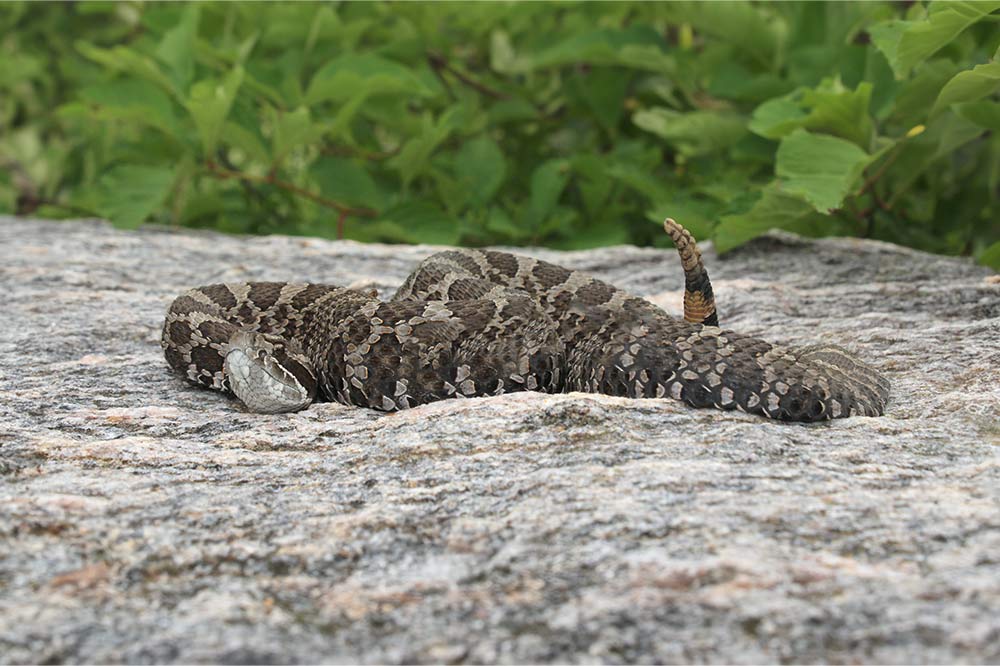
The Massasauga Rattlesnake (Sistrurus catenatus catenatus) stands as a unique and fascinating species native to Ontario’s diverse landscapes. This venomous reptile plays a vital role in its ecosystem, but its survival is threatened due to various factors. In this article, we delve into the habitat, behavior, threats, and conservation efforts concerning the Massasauga Rattlesnake, shedding light on how individuals can contribute to its preservation.
Habitat and Behavior
The Massasauga Rattlesnake’s habitat preferences revolve around specific conditions that aid its survival:
- Habitat Diversity: The snake thrives in diverse environments such as tall-grass prairies, forests with open canopies, marshes, swamps, fens, and bogs.
- Protection from Predators: These reptiles seek areas with ample cover, offering protection from predators and the elements.
- Warm Spots: Access to warm areas is crucial for effective digestion and reproduction.
- Rocky Terrain: They utilize crevices in rocky terrains for hibernation, which is essential for their survival during harsh winters.
Behavior and Reproduction
Unlike many other snakes, Massasaugas prefer solitary hibernation in underground burrows. After mating in early summer, female Massasaugas move to their chosen gestation site, where they remain until giving birth to live young two to four months later. During gestation, females rely on their stored body fat to nourish their developing embryos. Juvenile snakes are left to fend for themselves, facing predators and other challenges. A Massasauga that survives this phase can live up to 18 years.
Threats and Conservation
The Massasauga Rattlesnake has been classified as a threatened species under the federal Species at Risk Act since November 2002. The once widespread population in southern and central Ontario has been reduced to scattered populations due to several threats:
- Urban Development: Expanding road systems and urban areas encroach upon their habitats.
- Habitat Degradation: Drainage of wetlands and cottage development impact their living spaces.
- Perception: Fear and dislike of Ontario’s only venomous snake often lead to their killing.
- Relocation Risks: Attempting to relocate a Massasauga beyond 250 meters from its original habitat can result in its death, as it struggles to find hiding spots and hibernation sites.
Conservation Efforts
Several initiatives are in place to protect and conserve the Massasauga Rattlesnake:
- National Parks Protection: The Canada National Parks Act safeguards Massasaugas found in Georgian Bay Islands and Bruce Peninsula national parks.
- Ontario’s Legislation: These reptiles are also protected under Ontario’s Endangered Species Act, guarding them against harassment, capture, killing, buying, or selling.
- Education and Awareness: Raising awareness about the importance of Massasauga conservation is crucial. Educational programs, interpretive sessions, and initiatives by organizations like the Toronto Zoo contribute to dispelling myths and promoting responsible coexistence.
Taking Action
To contribute to the conservation of the Massasauga Rattlesnake:
- Road Safety: Remain vigilant while driving in Massasauga habitats, especially during spring and summer when snakes cross roads. Help prevent roadkill, a significant threat to their population.
- Participate: Engage in interpretive programs and research initiatives at national parks and conservation centers to deepen your understanding of these reptiles.
- Myth Dispelling: Educate others about the importance of Massasaugas in the ecosystem and dispel myths to foster a positive attitude towards their presence.
The Massasauga Rattlesnake’s survival depends on the joint efforts of conservationists, communities, and individuals. By understanding their habitat, behavior, threats, and the role each of us can play, we contribute to the protection of this remarkable species. As we strive for coexistence, our actions shape a future where the Massasauga Rattlesnake thrives within Ontario’s rich natural landscapes.
Quick Facts: Massasauga Rattlesnake
- Scientific Name: Sistrurus catenatus catenatus
- Habitat: Diverse environments including tall-grass prairies, forests, marshes, swamps, and rocky terrains.
- Survival Traits: Solitary hibernation, gestation sites, warm spots, and rocky terrain for hibernation.
- Conservation Status: Listed as a threatened species since 2002 due to urban development, habitat degradation, and relocation risks.
Conservation Actions
Protection: Safeguarded by Canada National Parks Act and Ontario’s Endangered Species Act.
Education: Awareness initiatives and educational programs promote responsible coexistence.
Road Safety: Vigilance during snake-crossing seasons helps prevent roadkill.